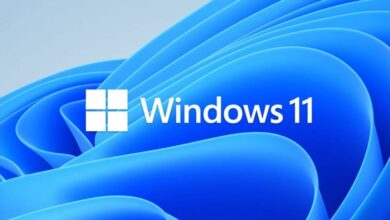HR Software Pricing Guide for 2025

Key takeaways
- On average, HR software ranges from $5–500 per employee per month.
- The exact price you’ll pay depends on several factors, including the number and types of users, the features you need, hardware requirements, and any necessary training and support.
- HR software generally follows two pricing models: monthly/annual subscriptions or perpetual licensing.
How much does HR software cost?
Depending on your requirements, HR software is usually priced from $5 per employee per month (PEPM) to $500 PEPM. Keep in mind that HR software pricing varies wildly compared to other software categories because the market is so vast. Additionally, many vendors opt for quote-based pricing instead of a standard pricing structure so they can tailor the software package and cost to meet the company’s budget and needs.
| HR software category | Typical cost |
|---|---|
| All-in-one HR suites | $5 to $40 PEPM |
| Payroll | $35 to $99 per month, plus $6 to $8 PEPM |
| Onboarding | $5 PEPM |
| Recruitment | $104 to $529 per month, plus $10 to $17 PEPM |
| Time tracking and scheduling | $4.50 to $10 PEPM |
| Performance management | $4 to $14 PEPM |
| Employee engagement | $5 to $10 PEPM |
| Learning management | Starts at $8 PEPM |
Note: The price ranges listed above are based on the leading products in each category. They are intended to serve as general guidelines—final costs will depend on your business’s unique requirements.
All-in-one HR software pricing
Pricing for most modern HR suites depends on your headcount and the capabilities you need. For example, BambooHR uses headcount to determine whether you pay a flat rate or a PEPM rate, whereas Rippling’s PEPM cost depends on the combination of modules you choose. Because of these factors, you should assess your organization’s anticipated growth and budget flexibility to decide which all-in-one software fits your organization.
Examples
$250 to $425 per month flat rate for 25 employees.
Starts at $8 per employee per month (PEPM).
Small to medium-sized businesses.
Medium to large-sized businesses
BambooHR is an all-in-one HR platform with a user-friendly interface that streamlines various HR tasks, including hiring, onboarding, and employee management.
Rippling has robust automation capabilities, which makes it an efficient solution for managing a distributed workforce and reducing repetitive data entry tasks.
BambooHR’s pricing structure is ideal if your organization has plans of scaling, as it offers volume discounts that become increasingly advantageous with a growing workforce. However, its Core plan is still quite expensive because it doesn’t include fundamental HR functions like payroll and time-tracking.
Rippling’s pricing structure is suited if your business requires a flexible and scalable HRIS. One drawback is it is relatively expensive compared to other options, but it has more advanced features. Rippling is particularly advantageous if your organization values the ability to tailor HR with specific tools.
Payroll software pricing
Pricing for payroll software typically uses a combination of a base monthly fee and PEPM structures.
- Automated payroll processing.
- Employee benefits enrollment and administration.
- Automated compliance with regulations like the ACA and COBRA.
Payroll software providers can charge you based on how often you run payroll or the features you need, such as tax filing capabilities. When choosing your payroll software, you should consider how often you need to process payroll and if additional features like automatic tax filing are worth the extra cost. Also, services like PEOs, EORs, and HROs that handle payroll administration on your behalf are more expensive.
Examples
$40 to $80 monthly base fee plus $6 to $12 PEPM.
$40 per month plus $6 PEPM.
Small to medium-sized businesses.
Gusto provides clear guidance for setting up an account, organizing an employee roster, and processing payroll. It includes helpful links for obtaining your federal employer identification number (FEIN), a detailed timeline, and a checklist to ensure your first payroll runs smoothly.
OnPay excels in payroll but also includes essential HR features for small businesses, such as time off management, benefits administration, customizable onboarding workflows, and task management. Plus, its payroll process is straightforward and user-friendly.
Gusto’s pricing suits your business if you need comprehensive yet straightforward payroll and HR solutions. Its tiered pricing structure caters well to businesses seeking a balance of cost and functionality.
OnPay’s pricing model offers value by including multi-state payroll, HR features, and customer support. However, businesses planning for significant growth or those needing advanced capabilities like performance management or in-depth analytics might find OnPay limiting.
Onboarding software pricing
Onboarding software typically structures its pricing using a combination of PEPM and a base monthly fee. Additional costs may apply if you require extra features or integrations. Consider software solutions that include:
- Automated onboarding workflows.
- Electronic document signing and storage.
- New hire checklists and forms.
Onboarding software with built-in compliance features, like integrations with e-Verify to check the I-9, state W4 forms, and e-signature capabilities, tend to be more costly than those that help you complete these tasks manually.
Examples
Starts at $149 per month.
Small to medium-sized businesses.
Small to medium-sized businesses.
GoCo is an onboarding platform that provides pre-built procedures for collecting essential paperwork like I-9 and W-4 forms alongside customizable fields for business-specific needs, such as uniform sizes or fun facts for orientation. It also has document-tracking features for compliance and organization. Additionally, GoCo’s AI assistant helps new hires quickly find information to help with their onboarding experience.
Workable is an ATS that also incorporates basic onboarding features designed to streamline the transition from candidate to employee. It supports the process through customizable onboarding checklists and automated reminders to ensure that new hires complete necessary tasks such as submitting documents and completing training modules.
GoCo’s pricing is ideal if you’re managing a small business or startup with a limited budget and you’re looking for an affordable solution with essential features like onboarding, document management, and basic time tracking.
Workable’s pricing is ideal for organizations that need features like customizable checklists, automated reminders, and document management. The tiered pricing also ensures that businesses only pay for the features they need.
Recruitment software pricing
Recruitment software can either have a monthly flat rate, a per-user rate, or a rate based on your employee headcount. Typically, software based on headcount is the most expensive but offers the most features. Depending on your recruiting needs, look for software that includes:
- A robust applicant tracking system (ATS) for managing candidates and applications.
- Easy job posting and management across multiple job boards.
- Effective candidate sourcing tools.
- Automated interview scheduling.
Examples
$99 to $499 per month (up to 50 employees).
Small to medium-sized businesses.
Small to medium-sized businesses.
BreezyHR can automate time-consuming tasks with tools like talent search, automated SMS, interview scheduling, and custom candidate scorecards. It offers a visual, drag-and-drop interface to manage candidate pipelines, automate communication, and schedule interviews. It facilitates team collaboration in real time and promotes jobs on over 50 job boards.
JazzHR is a user-friendly recruiting software that offers customizable recruitment workflows, e-signature functionality, and auto-reject features to simplify candidate management. It also supports candidate texting and social integrations through platforms like LinkedIn, Facebook, and Twitter.
Breezy HR’s price is ideal for fast-growing companies that require scalable recruiting solutions with a variety of pricing tiers.
JazzHR’s pricing plans can cater to companies needing to fill a few or even unlimited jobs per month.
Time tracking and scheduling software pricing
Time tracking and scheduling software pricing is typically based on the number of users and sometimes includes location-based fees. It’s important to account for potential costs associated with:
- Integrations with existing payroll or project management software.
- Headcount fluctuations.
- Mobile app access.
- Specialized features like geofencing.
- Compliance support.
- Workforce analytics.
- Intelligent or automated scheduling.
Examples
$20 to $40 per month base fee, plus $8 to $10 per user per month.
$2.50 to $8 per user per month.
Small to medium-sized businesses.
Small to medium-sized businesses.
QuickBooks Time enables companies to track employee time from any location using any device, with real-time updates. It also allows employees to clock in and out even without cell service and it integrates seamlessly with QuickBooks. Key features include GPS time tracking, a digital Time Kiosk for central clock-in/out, PTO tracking, and customizable employee scheduling.
When I Work helps businesses manage schedules, track time and attendance, and communicate with hourly employees. Its mobile app allows employees to access schedules, clock in and out, request time off, and manage shift swaps. Key features include employee scheduling, team messaging, an online time clock with GPS, and shift planning.
QuickBooks Time’s pricing is ideal if you require advanced tracking features such as geofencing, mileage and project tracking, and timesheet signatures. However, you must also be willing to invest in a higher cost structure for the added functionalities.
When I Work’s pricing is ideal if you’re looking for flexibility between scheduling alone or if you need combined time and attendance.
Performance management software pricing
Performance management software typically structures its pricing on a PEPM basis. Some platforms also charge a base monthly fee, and additional costs may apply for advanced features such as 360-degree feedback, learning and development modules, or custom reporting. A performance management software platform should include employee development tools, integration capabilities with other HR systems, and comprehensive analytics.
Some companies prefer to pay more for these features as standalone software because these specialized tools often provide deeper insights, more tailored solutions, and greater scalability. It’s helpful to evaluate the potential ROI using metrics like improved employee productivity and satisfaction, as well as additional costs for training staff to effectively use the software and ongoing support fees.
Examples
$6 to $11 per user per month.
Starts at $8 per user per month.
Medium to large businesses.
Medium to large businesses.
Lattice includes comprehensive features like continuous feedback, career development, and robust analytics. However, it has a steep learning curve. Lattice excels in managing large, diverse teams. Unique to Lattice is its compensation product, which helps set up compensation review cycles, guidelines, and benchmarks.
Leapsome excels in areas such as OKR management, one-on-one meetings, 360-degree reviews, and engagement surveys. Leapsome offers modular options, which allow organizations to select specific tools or combine them for comprehensive performance management.
Lattice’s pricing is ideal if your organization seeks a customizable approach to employee development. You can mix and match modules like performance management, engagement, growth, and compensation, especially those that can meet the minimum spend and benefit from volume discounts.
Leapsome’s pricing is ideal if you’re looking for specific modules such as reviews, goals, surveys, and learning. You can also benefit from volume discounts and a flexible, modular pricing structure that grows with your needs.
Employee engagement software
Employee engagement software typically structures its pricing on a PEPM. Pricing is usually based on the number of users, and the range of features such as pulse surveys, recognition systems, and analytics. When evaluating the pricing of employee engagement software, consider the potential return on investment in terms of improved employee morale and productivity. Other key features include recognition and rewards programs to boost morale and tools for facilitating internal communication.
Examples
Starts at $29 per month (first 30 users).
Starts at $4 per user per month.
Small to medium-sized businesses.
Small to medium-sized businesses.
Connecteam boosts employee experience through streamlined communication and operational management. It allows managers to schedule and assign tasks effectively, engage in real-time chats, and provide leadership training. It is particularly well-suited for organizations looking to consolidate their engagement tools into a single platform that supports a distributed workforce.
Motivosity has features like public recognition, customizable surveys, and collaborative 1-on-1s. The platform highlights daily efforts, facilitates continuous feedback and coaching, and allows employees to redeem rewards through the globally accepted ThanksMatters Visa Card.
Connecteam uses “hubs” and “tiers” in its pricing, which is good because it allows you to pick the feature you need. However, it is also pricier than standalone products.
Motivosity is right for you if you prefer a flat monthly rate as it simplifies budgeting and makes costs predictable. The optional Employee Insights feature adds flexibility, and there are no extra charges for setup or onboarding. However, there is a minimum annual licensing fee of $3,000, and fees must be paid annually, which may be challenging for small businesses.
Learning management software pricing
Learning management software typically uses a subscription-based pricing model on a PEPM basis. When weighing the cost of learning management software, factor in the long-term scalability to accommodate more users or content, potential costs for ongoing updates and support, and the integration with other systems, which can significantly affect total expenses.
LMS systems with monthly pricing offer stable budgeting for fixed user access, while PEPM pricing adjusts cost based on fluctuating user participation and is ideal for varying workforce sizes. LMS platforms featuring course creation tools are typically more expensive than those supporting only SCORM imports or pre-built courses due to the added complexity and customization capabilities.
Examples
Starts at $8 per user per month.
Small to medium-sized businesses.
Small to medium-sized businesses.
TalentLMS is a cloud-based learning management system known for its user-friendliness, adaptability, and extensive features. Plus, it suits businesses of all sizes. The platform caters to diverse learning requirements, ranging from onboarding and compliance training to ongoing skill enhancement.
360Learning incorporates collaborative tools with LMS and enables companies to leverage collective expertise for training. It also supports numerous organizations with its collaborative authoring tool. Ideal for high-growth companies, it promotes learner interaction and up-to-date course content.
TalentLMS pricing is ideal for businesses ranging from startups to large enterprises seeking a flexible learning management system that can grow with their needs. It offers plans that accommodate anywhere from 40 to 1000 users.
360Learning’s Team plan is affordable for small businesses. However, the Business plan is more practical and cost-effective if you have larger teams.
Factors affecting the price of HR software
Several factors determine HR software pricing, including:
- The type of HR software.
- Number and types of users.
- Software features.
- Implementation plans.
- Hardware and maintenance.
- Training and support.
Type of HR software
The type of HR software you need influences its price. For example, all-in-one HR software, with modules for core HR, payroll, benefits administration, recruiting, and performance management, is more expensive than standalone solutions.
HR software prices also drastically fluctuate depending on whether you choose an HRIS, HRMS, or HCM software solution. Human resources information systems (HRIS) are typically the most affordable, with basic data record-keeping and core HR processes. However, as your company grows, human resources management systems (HRMS) and human capital management (HCM) can provide additional functionality in workforce management and strategy. As a result, HCM platforms tend to be the most expensive on the market.
Number and types of users
Many HR software vendors with subscription-based pricing models base their prices on the number of software users. For many vendors, the number of users is equivalent to the number of employees in the company. As a result, you could pay more or less per month for the same features as your employee count changes.
However, other vendors define the term “users” differently. For example, some vendors define users as system administrators: employees responsible for maintaining the data in the system, such as HR, IT, or management teams. Therefore, you should research how HR software vendors define their platforms’ users, as the cost of the vendor’s HR solution can considerably increase or decrease depending on their definition.
Customization and features
Generally, the more features you need, the more expensive the HR software solution will be. Most solutions have a core set of features plus “add-on” features for additional capabilities and customization. These add-ons, integrations, and customized workflows can drive the cost of HR software up. To control costs, you should determine what must-have HR features are compared to nice-to-have features to save for later when the budget allows.
Implementation
You should expect a one-time implementation fee, depending on the HR software vendor. Implementation fees typically include installation, data migration, and access to implementation specialists for support. You should also consider the indirect costs associated with HR software implementation, such as how much time IT and HR employees spend on the implementation project instead of their other duties, and factor those into their overall HR software budget.
Hardware and maintenance
Total implementation costs may increase depending on the hardware the company needs to run its HR software, such as internal servers or updated computers. Vendors may also charge additional fees for system maintenance, including necessary feature upgrades or security patches. For example, if you need more data storage, Zoho People can offer you an option to have more storage by paying $4.60 per month or $55 for an extra 5 GB.
If your business has an internal IT department, you could forgo such costs; however, the time IT dedicates to the HR software’s upkeep will affect the solution’s overall return on investment (ROI).
Conversely, cloud-based subscription models offer benefits by eliminating the need for hardware investment and maintenance fees. Companies typically avoid these costs because the software runs on the provider’s servers, not their own.
Training and support
HR software vendors typically include software training as part of their implementation fee, but there may be additional fees for further training after implementation. In addition, the time HR staff are pulled away from other essential duties to train new staff members or hire more staff to support the new system can affect your total labor costs.
If you utilize HR or software consultants for support, you should also factor in their fees as part of their HR software costs. In the United States, consultants cost an average of $150 per hour but this varies widely based on the scope of the implementation project and its timeline. Still, instead of hiring additional staff, you can lean on consultants for expert software selection guidance or for outsourcing particular tasks, such as hardware maintenance.
Software license options
HR software companies typically sell their products as one-time licenses or ongoing subscriptions.
Subscription-based models
Most cloud-based HR vendors use subscription-based pricing models, so it’s definitely the most common pricing model you’ll encounter. With this model, you’ll pay a recurring fee either monthly or annually, depending on the terms of your subscription agreement.
Buyer beware
Many subscription-based models may seem like a good deal, but make sure you understand the total cost you’ll face after any promotional discounts or introductory offers expire. You should also clarify what the cancellation process looks like — the last thing you want is to be locked into paying for a service that no longer suits your business needs.
Perpetual licensing models
Perpetual licensing is most common among on-premises HR software products. You will pay a one-time fee that includes the cost of the HR software plus any required hardware, such as internal servers and other infrastructure. It’s important to note that with a perpetual license, you should anticipate additional costs down the road for upgrades, repairs, and replacements.
This model will suit your business if you prefer control over your data and you are willing to invest in long-term infrastructure without recurring subscription fees. Also, keep in mind that your team will be responsible for ongoing maintenance and support, so you should include staffing costs in the total cost of ownership.
Examples
$8–33+ per employee per month
One-time fee of $500-$100,000+






